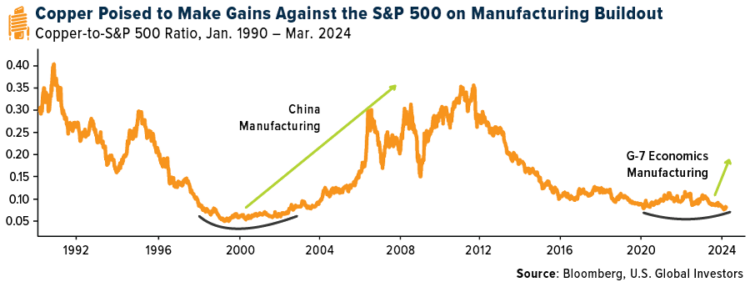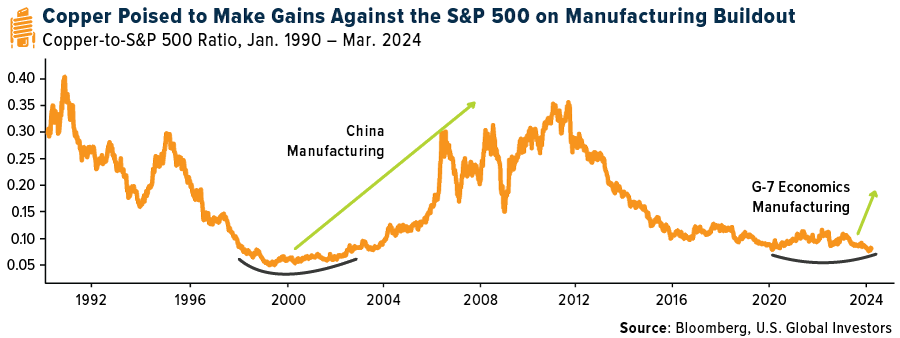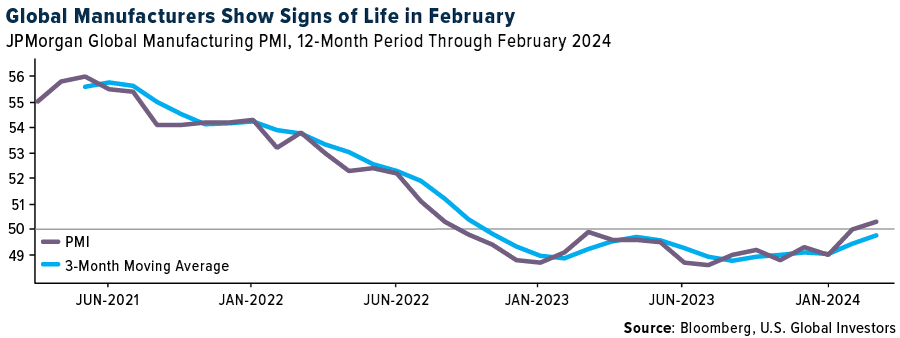
Copper futures climbed as high as $9,164.50 per metric ton on the London Metal Exchange (LME) on Monday, March 18, marking a fresh 11-month high. The rally comes hot on the heels of a months-long sideways grind, propelled by supply risks and growing optimism around the global economic outlook.Contributing to the run-up is news that as many as 15 Chinese smelters are considering output cuts at a recent high-level meeting in Beijing, which ignited a flurry of trading activity that the LME hasn’t seen in years. What’s more, an average of 11.5% of monitored copper smelter capacity in China was inactive in the first two months of 2024, compared to 8.6% in the same period last year and 8% in 2022, according to U.K.-based geospatial data firm Earth-i.Why are smelters close to cutting supply? Simply put, Chinese operators are facing a crisis over treatment and refining charges, or TC/RCs—fees that are paid to process copper concentrate into refined metal. TC/RCs have collapsed due to a shortage of concentrate supply, squeezing already razor-thin profit margins. Copper’s Central Role In EVs And Renewable EnergyBeyond supply concerns, copper demand continues to be driven largely by the renewable energy boom. According to the International Energy Agency (IEA), copper’s share of total demand across all applications is forecast to surge from 23% currently to over 42% by 2050.This isn’t just hot air. In August 2023, the Department of Energy (DoE) added copper to its official list of critical materials, making domestic producers eligible for government subsidies under the Inflation Reduction Act (IRA). The designation underscores copper’s pivotal role in securing a sustainable energy future.Electric vehicles (EVs), renewable power sources like solar and wind and increasing electrification across the global economy are supercharging copper’s demand growth. As I’ve shared with you before, a single EV requires around four times as much copper as a conventional gas-powered car. All told, EVs could account for nearly 60% of total copper demand by 2030, according to Bloomberg Intelligence. What A Rising PMI Could Mean For CopperWhile the green revolution and electrification efforts are set to drive significant demand for copper, I also believe a compelling argument lies in the reshoring efforts of developed economies. According to Crescat Capital’s Otavio Costa, the U.S. and other G-7 nations have neglected significant infrastructure investments for over seven decades, and the emerging deglobalization trends are expected to boost these construction undertakings, with copper positioned as a potential major beneficiary.In the chart below, you can see how the copper-to-S&P 500 ratio surged in the early 2000s when China spent heavily on construction. That relationship has collapsed in the years since, but if Costa’s prediction is accurate, we may see copper soar again relative to the stock market.  Recent Purchasing Manager’s Index (PMI) figures suggest the manufacturing sector is now in copper’s corner. The J.P. Morgan Global Manufacturing PMI rose to 50.3 in February, staying in expansionary territory for a second straight month after emerging from an 18-month contraction.Historically, a cross-above event—when the monthly PMI reading tops its three-month moving average—has signaled higher commodity and energy prices three to six months down the road. If the pattern holds, copper and its industrial peers could get an additional tailwind in the months ahead.
Recent Purchasing Manager’s Index (PMI) figures suggest the manufacturing sector is now in copper’s corner. The J.P. Morgan Global Manufacturing PMI rose to 50.3 in February, staying in expansionary territory for a second straight month after emerging from an 18-month contraction.Historically, a cross-above event—when the monthly PMI reading tops its three-month moving average—has signaled higher commodity and energy prices three to six months down the road. If the pattern holds, copper and its industrial peers could get an additional tailwind in the months ahead.  Unlocking Energy Opportunities With PSPFXFor investors seeking smart exposure to copper and its crucially important role in the green energy transition, I believe the Global Resources Fund (PSPFX) offers a compelling solution.With nearly 7% of its weighted in copper titan Ivanhoe Mines—a producer whose world-class Kamoa-Kakula copper project in the Democratic Republic of Congo (DRC) is expected to kick into high gear this decade—PSPFX allows investors to participate in copper’s upside potential through a best-in-breed producer. Other key holdings with exposure to copper include Arizona Sonoran Copper, Cordoba Minerals, Kutcho Copper and.And that’s just the start. PSPFX invests across a wide spectrum of natural resources industries, including energy, mining, chemicals, steel and more. This multi-asset approach provides investors with full commodities exposure while mitigating company-specific risks.The fund’s laser focus on value opportunities further sets it apart. Time and again, the PSPFX team has demonstrated its knack for identifying high-potential natural resources companies when they’re being mispriced by the market.With stellar demand drivers, favorable supply/demand dynamics and more potential upside ahead, copper may just be getting started.More By This Author:How Lower Rates And Central Bank Demand Are Fueling The Gold Rally
Unlocking Energy Opportunities With PSPFXFor investors seeking smart exposure to copper and its crucially important role in the green energy transition, I believe the Global Resources Fund (PSPFX) offers a compelling solution.With nearly 7% of its weighted in copper titan Ivanhoe Mines—a producer whose world-class Kamoa-Kakula copper project in the Democratic Republic of Congo (DRC) is expected to kick into high gear this decade—PSPFX allows investors to participate in copper’s upside potential through a best-in-breed producer. Other key holdings with exposure to copper include Arizona Sonoran Copper, Cordoba Minerals, Kutcho Copper and.And that’s just the start. PSPFX invests across a wide spectrum of natural resources industries, including energy, mining, chemicals, steel and more. This multi-asset approach provides investors with full commodities exposure while mitigating company-specific risks.The fund’s laser focus on value opportunities further sets it apart. Time and again, the PSPFX team has demonstrated its knack for identifying high-potential natural resources companies when they’re being mispriced by the market.With stellar demand drivers, favorable supply/demand dynamics and more potential upside ahead, copper may just be getting started.More By This Author:How Lower Rates And Central Bank Demand Are Fueling The Gold Rally
Gold Shines As Homebuying Affordability Hits A Record Low
Positioning Your Portfolio For A Potential Second Trump Presidency
















